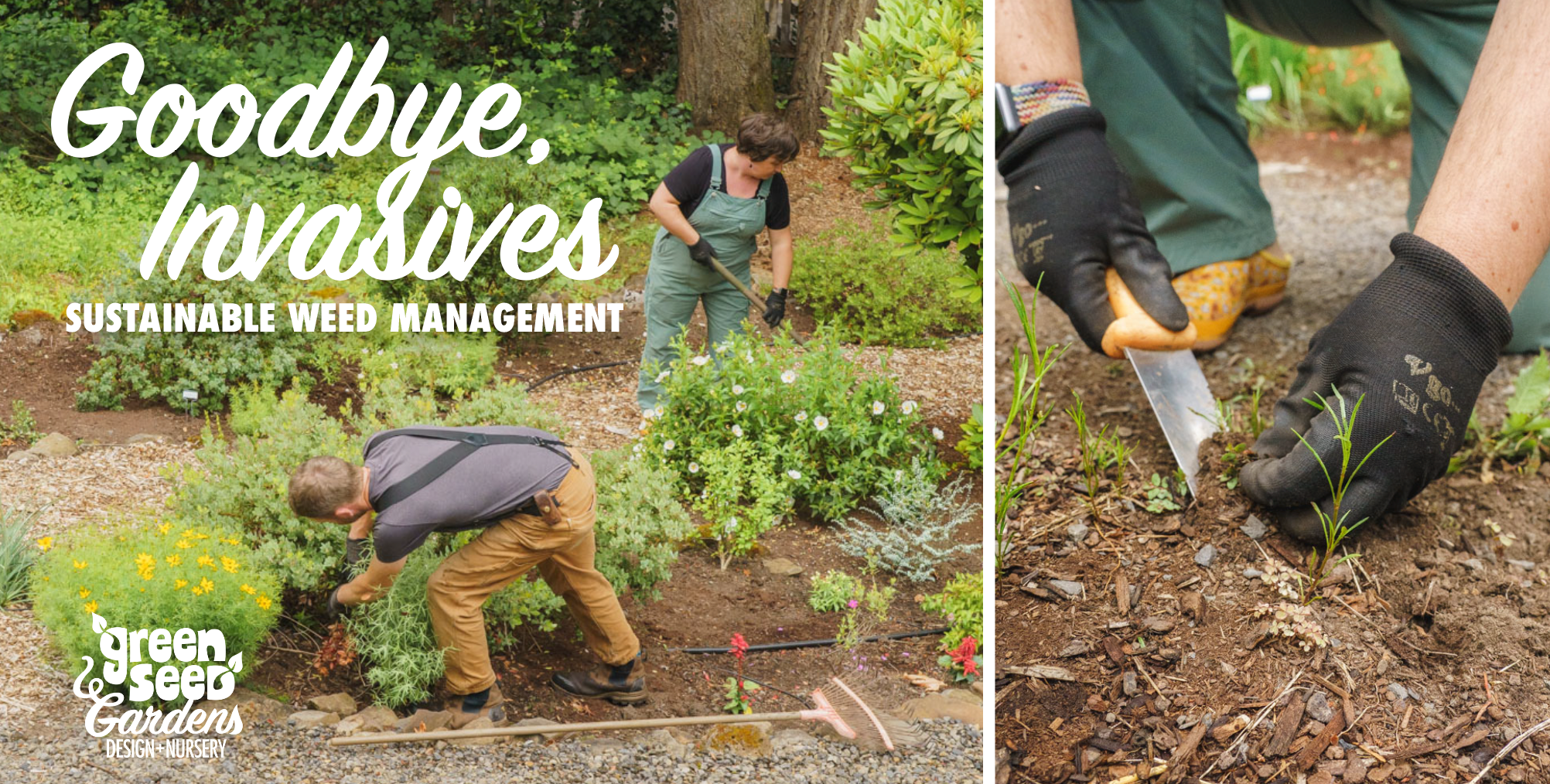
Weeding with Purpose: Sustainable Strategies for a Healthy Garden
Spring is here, and with it comes a familiar challenge—keeping invasive weeds in check!
As the days grow warmer, we’re already seeing some of our most persistent plant foes popping up, ready to take over if we let them. At Green Seed Gardens, in March, we turn our focus and efforts on a few major troublemakers: Celandine (Ficaria verna), Arum (Arum italicum), and Bluebells (Hyacinthoides hispanica).
With a little knowledge and persistence, we can stop these invaders from gaining ground and create space for the plants we actually want to thrive. One of our biggest concerns is Lesser Celandine (Ficaria verna). At first glance, it seems like a cheerful addition to the garden with its bright yellow flowers, but don’t be FOOLED—this plant is a sneaky spreader! It multiplies rapidly through tiny bulblets, making it difficult to remove completely.
One of our biggest concerns is Lesser Celandine (Ficaria verna). At first glance, it seems like a cheerful addition to the garden with its bright yellow flowers, but don’t be FOOLED—this plant is a sneaky spreader! It multiplies rapidly through tiny bulblets, making it difficult to remove completely.
So, how do we tackle it? Carefully digging out the entire plant—including all those pesky bulblets—is key. If you leave any behind, Celandine will bounce back with a vengeance.

And when it comes to disposal, never toss it into your yard waste bin—it can survive composting and spread to new areas. Instead, bag it up and send it to the trash to prevent further infestation.

Other Weeds We’re Tackling
Celandine isn’t the only invasive plant we’re dealing with. We’re also on high alert for Arum (Arum italicum) and Bluebells (Hyacinthoides hispanica), both of which spread aggressively if left unchecked. These plants can quickly take over garden beds, pushing out more desirable species.

Arum (Arum italicum)
Bluebells (Hyacinthoides hispanica)
Timing is Everything
Celandine, Arum, and other invasive control isn’t a one-and-done task. It can take years to fully eradicate, but persistence pays off! If you're short on time or want to focus your efforts, removing flowers before they set seed is a solid strategy.
Another effective approach is using black plastic to smother patches of invasive during the active growing season (February to May). After a couple of seasons, this method weakens the plants enough to give native species a fighting chance to reclaim the space.
Annual Weeds
Then there are the annual weeds—small but mighty troublemakers like Bittercress (Cardamine hirsuta) and Annual Bluegrass (Poa annua). These fast-growing weeds can set seed in the blink of an eye, so early removal is crucial. A little effort now saves a lot of work later!

Bittercress (Cardamine hirsuta)
Annual Bluegrass (Poa annua)
Weeding Tips for a Healthier Garden
If there’s one thing we’ve learned, it’s that consistency is key when it comes to weed control. Here are a few of our favorite tips to keep your garden manageable:
-
Start early – Spring weeding prevents bigger problems later in the season.
-
Be persistent – Many invasives require multiple years of removal efforts.
-
Dispose wisely – Some plants, like Celandine, shouldn’t be composted.
-
Smother when necessary – Black plastic can be a great tool for controlling tough patches.